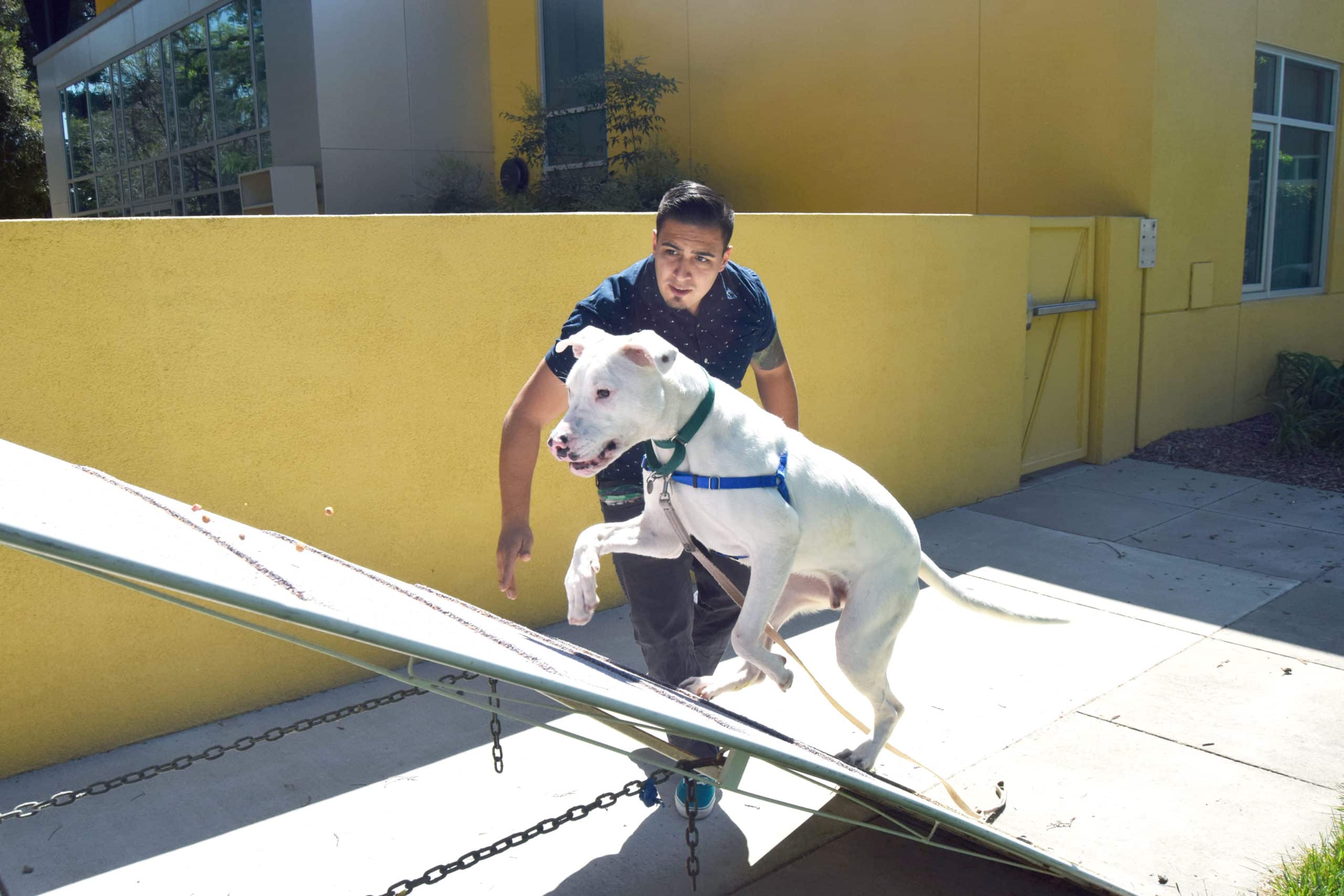Be Calm
When introducing two dogs to each other it is very important to be as calm as possible. Any anxiety or apprehension we have at the time will travel right down the leash to the dog. Dogs are experts at reading our body language.

- Pay attention to your breathing. A dog will notice if you start breathing faster and they will become more anxious themselves.
- Don’t talk excessively to the dog. Sometimes when we become anxious about a dog approaching we will start talking to our dog, “good boy, that’s okay, you’re alright, what a good puppy!”
- Watch the tension on the leash. Often we will wrap the leash tighter and tighter reeling our dog closer and closer to us. We want to have the leash as slack as possible when meeting another dog while still maintaining control over our dog.
Be Confident
Most dogs look to us to give them cues about how to behave/react. If we walk casually up to an approaching dog rather than pausing and tensing up our dog is more likely to be casual about the meeting, too.
Watch the Body Language
Careful observation of the dogs’ body language during the first few seconds of an introduction can tell us a lot. Here are some signs dogs give to each other:
“I like you. Let’s be friends.”
- Loose/wiggly body
- Ears back or relaxed
- Panting/smiling
- Tail loose/held down or level
- Wiggly/bouncing/bowing lip licking
“Leave me alone. I don’t want to play.”
- Stiff/tense body
- Ears very far forward
- Closed/tight mouth
- Tail arched up over back
- Frozen/standing up on tip toes
- Lip curling hard, direct staring
Mixed Signals
Some dog body language is difficult to read and some signals may mean one thing to one dog and something entirely different to another. Here are some examples:
Hackles: the hackles or hair along the dog’s spine may stand up for a variety of reasons. For some dogs it can be fear or anxiety while for other dogs it can be excitement or arousal.
Tail wagging: do not pay attention to tail wagging. A wagging tail does not always mean a dog is happy. It can also signal excitement or arousal. Dogs chasing prey often wag their tail excitedly during the chase and capture as do some dogs while fighting with other dogs.
Vocalizations: barking or whining when approaching another dog is not always a signal that the dog will behave aggressively when it meets the other dog. Many dogs who come on too strong and lack manners will bark incessantly at an approaching dog but become friends very quickly once they meet.
Other Tips
- Often we can ease the introduction by having the two dogs go for a walk around the courtyard or training field together prior to meeting. They can be close but not close enough to meet yet. This often helps with overly aroused/excited and barky dogs.
- Flexi-leads are your enemy. Always carry two leashes when doing meet and greets. No one can have very good control over their dog on a flexi-lead.
- Use caution so as to not tangle the leashes. This means doing “the circle dance” around the dogs as they walk in circles sniffing each other.
- If the initial greeting goes well and you want to let the dogs loose to play, keep the leashes attached and dragging just in case. Something may start a squabble later and you may need to pull the dogs apart. Grab the leash and not the dog to keep yourself safe.
- If you don’t feel comfortable doing an introduction or see something during an introduction that worries you don’t hesitate to call a senior counselor or behavior staff for consult.



